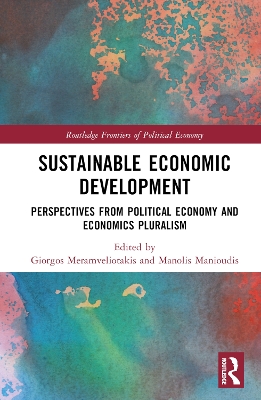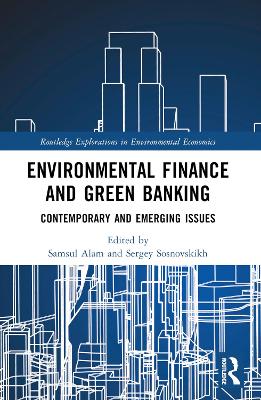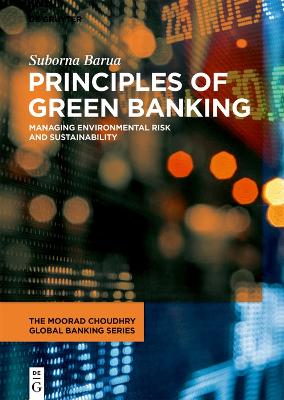Quantitative Methods for ESG Finance
 -15%
portes grátis
-15%
portes grátis
Quantitative Methods for ESG Finance
Castelli, Cino Robin; Shmatov, Cyril
John Wiley & Sons Inc
11/2022
240
Dura
Inglês
9781119903802
15 a 20 dias
666
Descrição não disponível.
Foreword vii
Introduction and Book Overview 1
1. Overview 1
2. Why ESG Finance? 2
3. Why Quantitative Methods? 2
4. Target Audience and Timing of This Book 2
5. Book Outline 3
1 Introduction to ESG Finance 5
1.1 Preface: ESG Is Not a Niche Strategy Anymore 5
1.2 Introduction and Definitions 7
1.3 ESG Investment Performance 21
1.4 Sustainability and Sustainable Finance 25
2 Factor Investing and Smart Beta 39
2.1 Index Construction Basics 39
2.2 Smart Beta Indexes 40
2.3 Risk Factor Investing 48
2.4 Fama- MacBeth Regressions 50
2.5 Expanding the Risk Factor Universe 53
3 ESG Ratings 55
3.1 Introduction 55
3.2 Overview of ESG Rating Methodologies 57
3.3 Regression Trees as an Alternative Scoring Technique 61
3.4 Random Forest 69
4 Alternative Data 75
4.1 What Are Alternative Data and Their ESG Applications? 75
4.2 How to Validate an ESG Data Provider 81
4.3 Processing Satellite Data 83
5 Alternative Text Data 105
5.1 Alternative Text Data on ESG 105
5.2 Corporate ESG Reports 108
5.3 Topic Modeling 114
5.4 Latent Dirichlet Allocation 118
5.5 Outlier Topics 126
6 Introduction to Agent- Based Modeling for ESG Finance 129
6.1 Preface 129
6.2 Use of Agent- Based Models in Other Fields and Their Applicability to ESG Finance 131
6.3 Use of ABMs in the ESG Field 132
6.4 General Overview of ABMs 133
6.5 General Operating Principles of ABMs 136
6.6 Example of the PartE Framework Applied to an ESG Scenario 136
6.7 Why We Should Look Closely at ABMs 138
6.8 Challenges in the Use of ABMs 139
6.9 Example: Buildup of a Population Model ABM 140
6.10 In- Depth Review: ABMs in Academic and Regulatory Publications 154
7 Climate Risk: Macro Perspective 165
7.1 Climate Change: Background Information and Definitions 165
7.2 Regulatory Response to Climate Change 185
7.3 Climate Change Modeling 191
7.4 Carbon Risk and Carbon Pricing 199
7.5 Climate Risk in Investment Practice 202
8 Stress Testing for Banks 207
8.1 Stress Testing as a Risk Management Tool 207
8.2 Macroeconomic Stress Scenarios for Climate Risk 213
8.3 Climate Loss Modeling 220
8.4 Climate Stress Testing Exercise 223
8.5 Concluding Notes 224
Index 227
Introduction and Book Overview 1
1. Overview 1
2. Why ESG Finance? 2
3. Why Quantitative Methods? 2
4. Target Audience and Timing of This Book 2
5. Book Outline 3
1 Introduction to ESG Finance 5
1.1 Preface: ESG Is Not a Niche Strategy Anymore 5
1.2 Introduction and Definitions 7
1.3 ESG Investment Performance 21
1.4 Sustainability and Sustainable Finance 25
2 Factor Investing and Smart Beta 39
2.1 Index Construction Basics 39
2.2 Smart Beta Indexes 40
2.3 Risk Factor Investing 48
2.4 Fama- MacBeth Regressions 50
2.5 Expanding the Risk Factor Universe 53
3 ESG Ratings 55
3.1 Introduction 55
3.2 Overview of ESG Rating Methodologies 57
3.3 Regression Trees as an Alternative Scoring Technique 61
3.4 Random Forest 69
4 Alternative Data 75
4.1 What Are Alternative Data and Their ESG Applications? 75
4.2 How to Validate an ESG Data Provider 81
4.3 Processing Satellite Data 83
5 Alternative Text Data 105
5.1 Alternative Text Data on ESG 105
5.2 Corporate ESG Reports 108
5.3 Topic Modeling 114
5.4 Latent Dirichlet Allocation 118
5.5 Outlier Topics 126
6 Introduction to Agent- Based Modeling for ESG Finance 129
6.1 Preface 129
6.2 Use of Agent- Based Models in Other Fields and Their Applicability to ESG Finance 131
6.3 Use of ABMs in the ESG Field 132
6.4 General Overview of ABMs 133
6.5 General Operating Principles of ABMs 136
6.6 Example of the PartE Framework Applied to an ESG Scenario 136
6.7 Why We Should Look Closely at ABMs 138
6.8 Challenges in the Use of ABMs 139
6.9 Example: Buildup of a Population Model ABM 140
6.10 In- Depth Review: ABMs in Academic and Regulatory Publications 154
7 Climate Risk: Macro Perspective 165
7.1 Climate Change: Background Information and Definitions 165
7.2 Regulatory Response to Climate Change 185
7.3 Climate Change Modeling 191
7.4 Carbon Risk and Carbon Pricing 199
7.5 Climate Risk in Investment Practice 202
8 Stress Testing for Banks 207
8.1 Stress Testing as a Risk Management Tool 207
8.2 Macroeconomic Stress Scenarios for Climate Risk 213
8.3 Climate Loss Modeling 220
8.4 Climate Stress Testing Exercise 223
8.5 Concluding Notes 224
Index 227
Este título pertence ao(s) assunto(s) indicados(s). Para ver outros títulos clique no assunto desejado.
Risk factor investing; esg portfolios; esg portfolio construction; quantitative esg; esg scoring; esg financial products; financial risk management; climate risk in finance; climate risk; esg risk in finance; esg risk python; alternative esg data; alternative text data; satellite imagery; alternative data for finance
Foreword vii
Introduction and Book Overview 1
1. Overview 1
2. Why ESG Finance? 2
3. Why Quantitative Methods? 2
4. Target Audience and Timing of This Book 2
5. Book Outline 3
1 Introduction to ESG Finance 5
1.1 Preface: ESG Is Not a Niche Strategy Anymore 5
1.2 Introduction and Definitions 7
1.3 ESG Investment Performance 21
1.4 Sustainability and Sustainable Finance 25
2 Factor Investing and Smart Beta 39
2.1 Index Construction Basics 39
2.2 Smart Beta Indexes 40
2.3 Risk Factor Investing 48
2.4 Fama- MacBeth Regressions 50
2.5 Expanding the Risk Factor Universe 53
3 ESG Ratings 55
3.1 Introduction 55
3.2 Overview of ESG Rating Methodologies 57
3.3 Regression Trees as an Alternative Scoring Technique 61
3.4 Random Forest 69
4 Alternative Data 75
4.1 What Are Alternative Data and Their ESG Applications? 75
4.2 How to Validate an ESG Data Provider 81
4.3 Processing Satellite Data 83
5 Alternative Text Data 105
5.1 Alternative Text Data on ESG 105
5.2 Corporate ESG Reports 108
5.3 Topic Modeling 114
5.4 Latent Dirichlet Allocation 118
5.5 Outlier Topics 126
6 Introduction to Agent- Based Modeling for ESG Finance 129
6.1 Preface 129
6.2 Use of Agent- Based Models in Other Fields and Their Applicability to ESG Finance 131
6.3 Use of ABMs in the ESG Field 132
6.4 General Overview of ABMs 133
6.5 General Operating Principles of ABMs 136
6.6 Example of the PartE Framework Applied to an ESG Scenario 136
6.7 Why We Should Look Closely at ABMs 138
6.8 Challenges in the Use of ABMs 139
6.9 Example: Buildup of a Population Model ABM 140
6.10 In- Depth Review: ABMs in Academic and Regulatory Publications 154
7 Climate Risk: Macro Perspective 165
7.1 Climate Change: Background Information and Definitions 165
7.2 Regulatory Response to Climate Change 185
7.3 Climate Change Modeling 191
7.4 Carbon Risk and Carbon Pricing 199
7.5 Climate Risk in Investment Practice 202
8 Stress Testing for Banks 207
8.1 Stress Testing as a Risk Management Tool 207
8.2 Macroeconomic Stress Scenarios for Climate Risk 213
8.3 Climate Loss Modeling 220
8.4 Climate Stress Testing Exercise 223
8.5 Concluding Notes 224
Index 227
Introduction and Book Overview 1
1. Overview 1
2. Why ESG Finance? 2
3. Why Quantitative Methods? 2
4. Target Audience and Timing of This Book 2
5. Book Outline 3
1 Introduction to ESG Finance 5
1.1 Preface: ESG Is Not a Niche Strategy Anymore 5
1.2 Introduction and Definitions 7
1.3 ESG Investment Performance 21
1.4 Sustainability and Sustainable Finance 25
2 Factor Investing and Smart Beta 39
2.1 Index Construction Basics 39
2.2 Smart Beta Indexes 40
2.3 Risk Factor Investing 48
2.4 Fama- MacBeth Regressions 50
2.5 Expanding the Risk Factor Universe 53
3 ESG Ratings 55
3.1 Introduction 55
3.2 Overview of ESG Rating Methodologies 57
3.3 Regression Trees as an Alternative Scoring Technique 61
3.4 Random Forest 69
4 Alternative Data 75
4.1 What Are Alternative Data and Their ESG Applications? 75
4.2 How to Validate an ESG Data Provider 81
4.3 Processing Satellite Data 83
5 Alternative Text Data 105
5.1 Alternative Text Data on ESG 105
5.2 Corporate ESG Reports 108
5.3 Topic Modeling 114
5.4 Latent Dirichlet Allocation 118
5.5 Outlier Topics 126
6 Introduction to Agent- Based Modeling for ESG Finance 129
6.1 Preface 129
6.2 Use of Agent- Based Models in Other Fields and Their Applicability to ESG Finance 131
6.3 Use of ABMs in the ESG Field 132
6.4 General Overview of ABMs 133
6.5 General Operating Principles of ABMs 136
6.6 Example of the PartE Framework Applied to an ESG Scenario 136
6.7 Why We Should Look Closely at ABMs 138
6.8 Challenges in the Use of ABMs 139
6.9 Example: Buildup of a Population Model ABM 140
6.10 In- Depth Review: ABMs in Academic and Regulatory Publications 154
7 Climate Risk: Macro Perspective 165
7.1 Climate Change: Background Information and Definitions 165
7.2 Regulatory Response to Climate Change 185
7.3 Climate Change Modeling 191
7.4 Carbon Risk and Carbon Pricing 199
7.5 Climate Risk in Investment Practice 202
8 Stress Testing for Banks 207
8.1 Stress Testing as a Risk Management Tool 207
8.2 Macroeconomic Stress Scenarios for Climate Risk 213
8.3 Climate Loss Modeling 220
8.4 Climate Stress Testing Exercise 223
8.5 Concluding Notes 224
Index 227
Este título pertence ao(s) assunto(s) indicados(s). Para ver outros títulos clique no assunto desejado.
Risk factor investing; esg portfolios; esg portfolio construction; quantitative esg; esg scoring; esg financial products; financial risk management; climate risk in finance; climate risk; esg risk in finance; esg risk python; alternative esg data; alternative text data; satellite imagery; alternative data for finance







